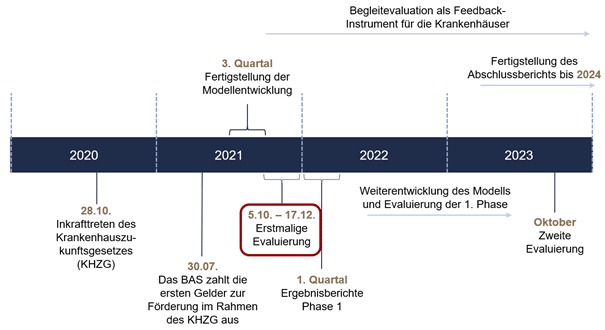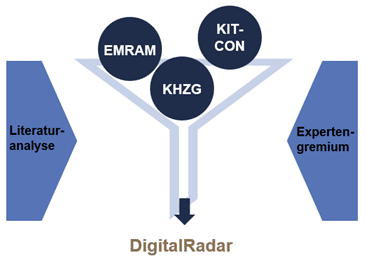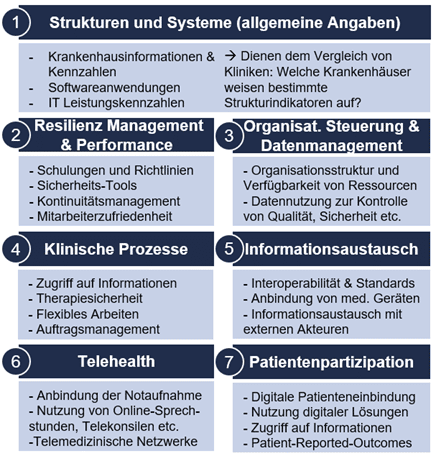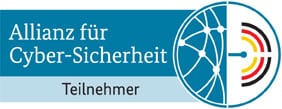Current surveys see digitization in German hospitals lagging well behind the European average. With the Hospital Futures Act (KHZG), the legislature is making 4.3 billion euros available to drive forward the digital transformation. In order to determine the status quo and the effects resulting from the investments, the DigitalRadar is now available as a maturity model to determine the degree of digitization of German hospitals.
Objective
The KHZG stipulates the evaluation of the maturity level of hospitals with regard to digitization. The aim here is not only to assess the impact of the funding that has been provided, but also to provide an evaluation for the general assessment of the degree of digitization of German hospitals. The DigitalRadar thus aims to provide hospitals with a tool with which they can actively shape the digital future and compare themselves nationally and internationally. The legislator also hopes that the results of the DigitalRadar will enable it to draw conclusions about possible further necessary legislative measures.
Explicitly not connected with the DigitalRadar survey are the down payments of up to 2 percent of sales that will become due from 2025 if a certain level of digitization is not achieved. According to the Federal Ministry of Health, the results of the surveys are not associated with any penalties.
Basics and Status Quo
The DigitalRadar follows a three-step approach:
- Development of a measurement and assessment tool
- Data collection and self-assessment of the hospitals
- Overall analysis of the longitudinal course by comparing the data at two different measurement points.
At the current time, DigitalRadar is at the end of model development and the beginning of data collection by hospitals. To this end, the first version of the model was tested in a pilot phase in 13 selected hospitals. The findings from this pilot phase have now been used to finalize the maturity model. From October 5, 2021, the first data collection by hospitals will now take place by independently answering the questions in the criteria catalog.

Structure of the DigitalRadar
Various existing models were incorporated to develop the maturity model. The funding regulations laid down in the KHZG serve as a basic guard rail. The HIMSS-EMRAM model is an internationally established, widely used model and helps to achieve international comparability. In addition, the KIT-CON model, developed by German hospitals and university hospitals, is incorporated to represent the German hospital market.

Thus, on the basis of different established systematics, a model is to be available which, on the one hand, reflects the special features of the German hospital landscape, but at the same time enables international benchmarking.
The criteria catalog comprises 234 criteria, which are assigned to seven different dimensions.

The DigitalRadar results are presented on a scale of 0 to 100. The participating hospital is provided with both the overall score and the respective fulfillment of the criteria, broken down by the individual dimensions as a dashboard. In addition, the international EMRAM level from 0 (no digitization) to 7 (paperless hospital) is derived from the points achieved in the national DigitalRadar assessment. Important: Only installations introduced by June 30, 2021 may be surveyed. The survey must be conducted individually for each site.
Participation and data collection
All German hospitals can participate in the survey. However, only those hospitals that receive funding under the KHZG are obliged to participate. The first evaluation will take place in the period from October 5 to December 17, 2021. Hospitals can still register on the DigitalRadar website and will receive a link with the questions in the criteria catalog starting in October. The survey is to be carried out by the facility independently and with the involvement of the persons relevant to answering the individual questions. According to the pilot hospitals, the effort involved in the survey averages between five and 20 hours, depending on the size of the facility, plus organizational preparation. Up to eight people were involved in the survey at the facilities surveyed. Upon successful submission, the hospitals receive the certificate required for KHZG funding.
Challenges
The pilot hospitals indicated that the scope of the list of criteria is quite challenging. Also, scheduling meetings with those involved in the survey process presents challenges for the interdisciplinary teams. It also remains to be seen whether the two-year interval between surveys is sufficient to capture changes and impacts of KHZG funding on hospitals’ digital maturity.
Conclusion
The DigitalRadar provides German hospitals with a model for measuring their level of digital maturity that builds on international standards and allows longitudinal internal and external benchmarking. The results of the DigitalRadar thus have great potential to generate a gain in knowledge both at the federal level and at the level of the hospitals and to drive forward the digital transformation.















